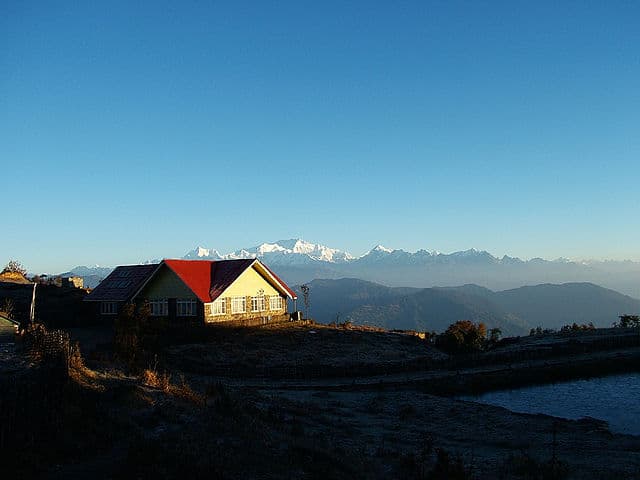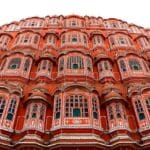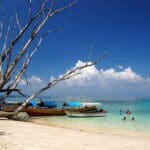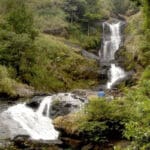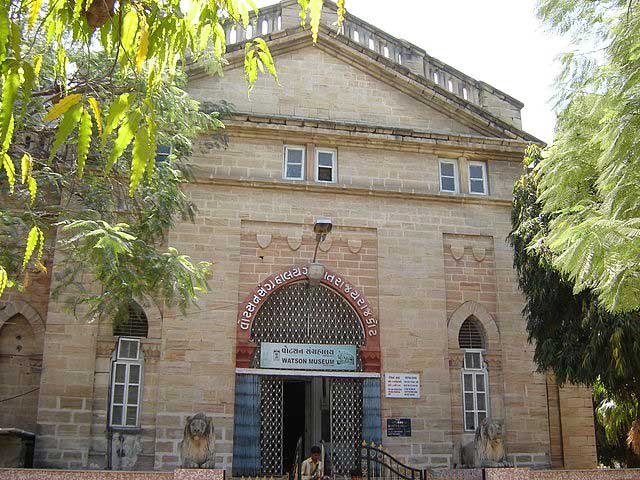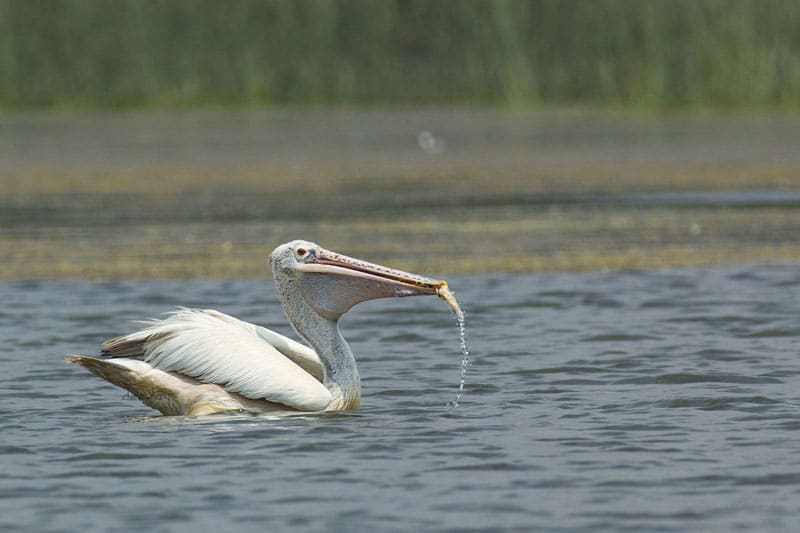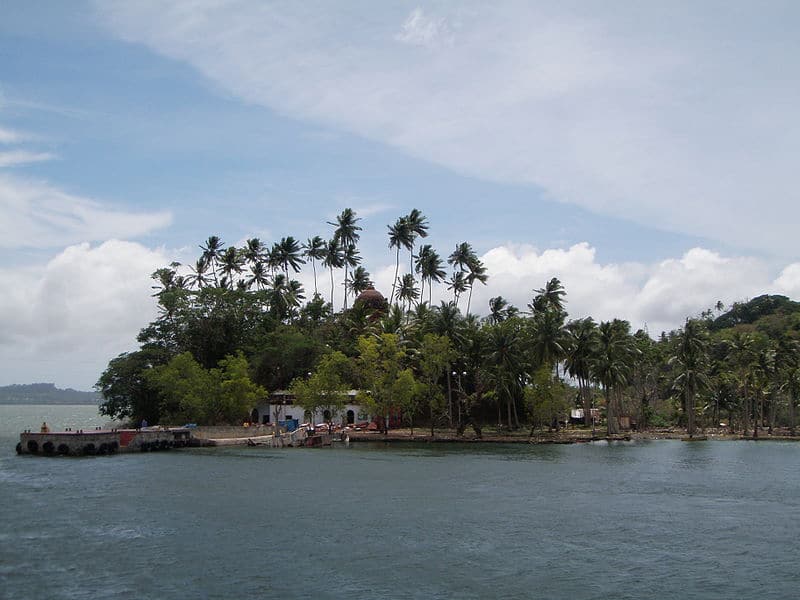The mesmerizing region of Sandakphu perched at an exhilarating altitude of 3,636m (11,929ft), is celebrated as the highest point of West Bengal. It unfolds a surreal panorama of snowy summits, lush rhododendron forests, undulating meadows, and charismatic Buddhist hamlets. As we explore the top 5 places to visit in Sandakphu, we invite you to experience the unspoiled charm, unique bio-diversity, and awe-inspiring vistas that make this region a hiker’s paradise and a nature lover’s wonderland.
Why Sandakphu Captivates Visitors
Surrounded by mythic mountains and verdant woodlands, Sandakphu is not just a destination—it’s an odyssey into nature’s magic. The interplay of clouds and sunlight over iconic peaks—Mount Everest, Kanchenjunga, Lhotse, and Makalu—crafts a panoramic masterpiece. The trail is a living gallery of rare Alpine flora and vibrant birdlife, with tranquil villages dotting the journey. Sandakphu offers a profound sense of accomplishment to all who conquer her paths.
1. Sandakphu Summit: The Ultimate Himalayan Vantage Point
Unparalleled Panoramic Views
The Sandakphu Summit stands as the crown jewel among the top places to visit in the region. From this rugged, windswept peak, you can feast your eyes upon the Sleeping Buddha formation: the Kanchenjunga range appearing as a sleeping figure, flanked by the hallowed massifs of Everest, Lhotse, and Makalu.
Sunrise and Sunset: Nature’s Theatre
Every dawn and dusk transforms the summit into a canvas ablaze with orange and gold. The play of light brings even the finest Himalayan ridges to sharp relief, making dawn treks especially popular.
Unique Flora, Fauna, and Biodiversity
Sandakphu is ensconced within the Singalila National Park, celebrated for its biodiversity. Marvel at the riot of rhododendrons in April and May, watch emerald slopes embroidered with magnolias and rare orchids, and listen to the birdsong of over 120 species, including the Satyr Tragopan and the elusive Red Panda.
Photographer’s Haven
Bring your camera: every frame here is a postcard. The whole trek radiates with vibrant blooms, shifting mists, and crystalline blue skies.
2. Singalila National Park: The Heart of Himalayan Wilderness
A Sanctuary for Wildlife Enthusiasts
Singalila National Park is the green soul of Sandakphu and a biosphere teeming with exotic species. It stretches across 78.6 square kilometers from Manebhanjan to Phalut, cradling the Sandakphu trail.
Endangered Species and Rare Flora
-
Red Panda Habitat: Home to one of the world’s only natural populations of the playful Red Panda.
-
Diverse Birdlife: Excellent for birdwatching, with species like Blood Pheasant, Fire-tailed Myzornis, and Himalayan Vultures.
-
Exquisite Plant Life: From blooming Himalayan cobra lilies to the psychedelic colors of rhododendron forests, the trekking route is a continuous botanical wonder.
Trekking Through UNESCO Forests
The Park is a UNESCO World Heritage site, offering well-marked trails through cloud forests, bamboo groves, and Alpine meadows. Every corner reveals a new tableau of untouched nature.
Cultural Encounters
While traversing parkland, interact with Sherpa, Tamang, and Lepcha communities. Their settlements—imbued with prayer flags and traditional hospitality—offer chances to experience Himalayan culture and sample authentic local cuisine.
3. Tumling: An Enchanting Himalayan Hamlet
Gateway to Singalila and Ideal Acclimatization Stop
Tumling is a charming, peaceful settlement perched at 2,970m, straddling the India-Nepal border. As a key stop along the Sandakphu trek, Tumling offers a blend of tranquil nature, culture, and comfort.
Unique Indo-Nepal Border Experience
Cross invisible international boundaries as you stroll between Indian and Nepalese homes. Local guesthouses and homestays offer warm hospitality, hot meals, and stories by the fireside.
Dramatic Kanchenjunga Views
Tumling’s open meadows provide some of the trek’s clearest early views of the Kanchenjunga massif. On moonlit nights, the peaks glow against the stars—a sight you’ll cherish forever.
Spiritual and Cultural Essence
Small monasteries, fluttering prayer flags, and Buddhist stupas lend a serene ambiance, making Tumling perfect for relaxation and meditation before resuming your hike.
4. Kalipokhri: The Sacred Black Lake
A Mystical Pilgrim Destination Amidst Alpine Splendor
Named for the diminutive “black lake” at its heart (Kali Pokhri), this mountain hamlet is steeped in legend and spirituality. At 3,170m, it’s revered by locals and pilgrims alike.
The Lake: A Centerpiece of Faith
The waters of Kalipokhri Lake—perpetually dark and still—are believed to be sacred, with Buddhist prayer flags encircling its banks. The lake never freezes, even in the harshest winter.
Idyllic Village Atmosphere and Mountain Views
Surrounding the lake is a cluster of traditional cottages, shrouded in mist and pine-scented breezes. The location offers sweeping views of Nepalese valleys, and on a clear day, distant snowy peaks.
Interactions with Locals
Meet Yaks grazing in green pastures. Sample local butter tea and join villagers in daily prayers and rituals that add a cultural dimension to your trekking experience.
5. Phalut: The Meeting Point of Horizons
The Wild Frontier of the Borderlands
At 3,595m, Phalut is the second highest peak in West Bengal and marks the confluence of Sikkim, West Bengal, and Nepal. This isolated, panoramic meadow is famed for its geological grandeur and untamed wilderness.
Breathtaking Sunrise Views
The pre-dawn ascent is rewarded with a 360-degree sweep of snow-capped Himalayan giants, with Kanchenjunga a mere 21km away, appearing so close you feel you can touch it.
Highland Meadows and Rhododendron Forests
Blanketed in bright rhododendrons every spring, Phalut is a botanist’s delight. The rolling grasslands are punctuated with wildflowers and whispering winds.
Solitude and Reflection
With minimal infrastructure—just a solitary government trekkers’ hut—Phalut offers deep solitude, allowing time for personal reflection amid vast open spaces.
Additional Must-Visit Gems Near Sandakphu
Though the above are the star attractions, the broader Sandakphu region offers many other gems:
-
Gairibas: Famous for its dense bamboo groves, excellent birdwatching, and forest rest houses.
-
Chitre Monastery: Ancient Buddhist site providing insight into local spiritual practices and stunning valley views.
-
Bikeybhanjan: Known for its rhododendron belts and as a checkpoint along the trek.
-
Srikhola: A serene riverside village ideal for relaxing after a long trek amidst gurgling streams and rustic wooden bridges.
-
Manebhanjan: The traditional trek starting point, bustling with quaint markets, old-world hostels, and iconic Land Rover jeeps.
Best Time to Visit Sandakphu
The ideal season to visit Sandakphu is from April to May and October to early December. Spring brings an explosion of rhododendrons, and autumn guarantees clear skies and crisp mountain vistas. Winter treks, though challenging, reward with snowy landscapes and ethereal beauty.
The Sandakphu Trek: A Step-by-Step Guide
Getting to the Starting Point
-
By Road: Reach Manebhanjan from Darjeeling, Siliguri, or NJP by taxi or bus.
-
By Train/Air: The nearest railhead is New Jalpaiguri (NJP), and the nearest airport is Bagdogra.
Trek Route Highlights
-
Manebhanjan → Chitre
-
Chitre → Tumling
-
Tumling → Kalipokhri
-
Kalipokhri → Sandakphu
-
Sandakphu → Phalut
Each day presents distinct landscapes, increasing altitude, and fresh wonders.
Accommodation and Facilities
Guesthouses, homestays, and trekkers’ huts are available at major stops. Warm bedding, local cuisine, and basic amenities make for a cozy retreat after challenging walks.
Ecological Importance: Sandakphu’s Unique Biodiversity
Sandakphu and the Singalila Ridge are ecologically significant, supporting:
-
Endangered Red Pandas
-
Leopard Cats, Barking Deer, Wild Boars
-
350+ species of butterflies
-
Diverse medicinal and floral species
Nature lovers will delight in guided biodiversity walks and responsible ecotourism initiatives that protect this vital habitat.
Cultural Heritage and Local Cuisine
Ethnic Diversity
The region is home to Sherpas, Tamangs, Lepchas, and Nepalese, whose hospitality adds warmth to the mountain chill.
Culinary Highlights
Savor authentic dishes such as phagshapa (pork with radish), momos, thukpa (noodle soup), millet beer, and butter tea. Sharing meals in a village kitchen deepens connections with local traditions.
Travel Tips for Sandakphu Visitors
-
Physical Preparation: The trek is moderately challenging; prepare with regular cardio exercises.
-
Gear: Good trekking boots, layered clothing, rain protection, and sleeping bags are essential.
-
Permits: Obtain Singalila National Park entry permits at Manebhanjan.
-
Guided Tours: Recommended for safety, wildlife insight, and cultural exchanges.
-
Responsible Tourism: Carry out your waste, respect local customs, and preserve natural habitats.
How to Reach Sandakphu: Practical Information
-
Nearest Major Town: Darjeeling (58km from Manebhanjan)
-
Public Transport: Shared jeeps, taxis, and Land Rover services are available from Manebhanjan.
-
Guided Trek Operators: Many agencies based in Darjeeling and Siliguri offer organized treks with experienced guides.
Top 5 Places to Visit in Sandakphu: Quick Reference Table
| Place | Key Attractions | Unique Features |
|---|---|---|
| Sandakphu | 360-degree Himalayan views | Sunrise/Sunset vistas, highest point |
| Singalila NP | Rare wildlife, UNESCO forests | Red Panda, diverse birds & flora |
| Tumling | Indo-Nepal culture, mountain hospitality | Kanchenjunga close-ups, Buddhist influence |
| Kalipokhri | Sacred lake, village rituals | Always unfrozen lake, yak sightings |
| Phalut | 360-degree meadows, solitude | Near Kanchenjunga, wild flowers, Sikkim border |
Conclusion
Embarking on an adventure to the top 5 places to visit in Sandakphu is more than a journey — it’s a transformative experience. Whether you crave the triumph of summiting Himalayan peaks, the quietude of ancient forests, or the warmth of village kitchens, Sandakphu delivers memories to last a lifetime. With stunning scenery, thriving biodiversity, and the gentle rhythms of Himalayan culture, its call is irresistible for wanderers and trekkers alike.
FAQ: Top 15 Questions About Visiting Sandakphu
-
What is the best time to trek to Sandakphu?
The best months are April-May and October-early December for clear views and blooming rhododendrons. -
How long does the Sandakphu trek take?
The trek usually takes 5-7 days, depending on pace and stops. -
Do I need a permit to enter Singalila National Park?
Yes, permits are required and available at Manebhanjan. -
Is Sandakphu suitable for beginners?
The trek is moderately challenging but manageable for fit beginners with preparation. -
What is unique about the Sandakphu summit?
You can see four of the world’s five highest peaks, including Everest and Kanchenjunga. -
Can I see the Red Panda in Singalila National Park?
Yes, though sightings are rare, Singalila is one of their last natural habitats. -
Are there ATMs or mobile networks along the trek?
ATMs and strong network coverage are only available at starting points like Manebhanjan, not en route. -
How cold does it get at Sandakphu?
Temperatures can drop below freezing at night, especially from November to March. -
Are guided treks available?
Yes, local operators and agencies offer guide services for safety and convenience. -
Can I drive up to Sandakphu?
4×4 vehicles like vintage Land Rovers can drive up, but trekking offers the best experience. -
What kind of food is available along the route?
Local home-cooked meals—rice, dal, vegetables, momos, thukpa—are commonly served at homestays. -
Is drinking water easily available?
Filtered and boiled water is available at most tea houses and guesthouses. -
Can I rent trekking equipment locally?
Some shops in Darjeeling and Manebhanjan rent boots, jackets, and sleeping bags but supplies are limited. -
Are there emergency medical facilities?
Basic first aid is available, but for serious emergencies, evacuation to Darjeeling is necessary. -
What wildlife might I spot besides Red Pandas?
Keep an eye out for Himalayan black bears, wild boars, clouded leopards, and a wide array of birds.


